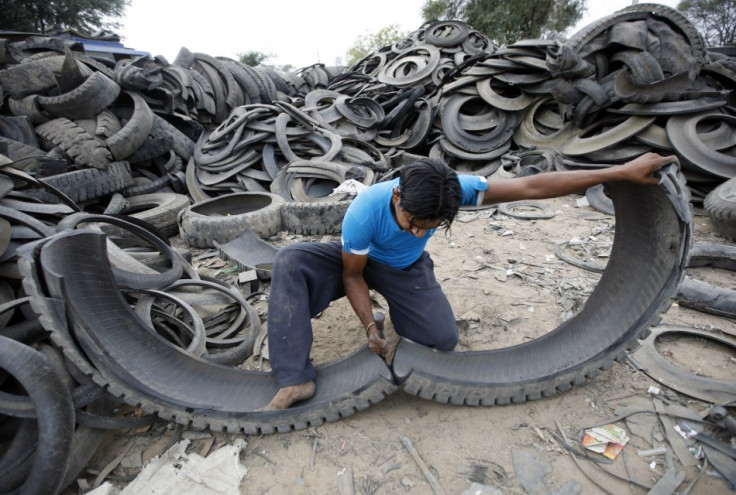India: How Many Growth Warnings do Investment Banks Need?

After Standard & Poor's (S&P) slashed India's sovereign credit outlook from stable to negative Wednesday, many market participants took a sharp intake of breath and remarked how the damning view was not what they were expecting.
But why are people surprised?
In fact, why haven't more financial market participants pared back their desire to significantly expand operations and plough investments at the rate of knots in a country that has had questionable gross domestic product (GDP) growth rate forecasts for the last year.
Teetering on the brink of junk status should be a significant warning.
This is not to say that the opportunities and growth present in India and other emerging market countries have not been desirable in comparison to European growth. India is, after all, part of the BRIC group of major emerging markets that will account for 23 percent of the world's output in 2016, according to a Grant Thornton International report.
It has notably been a great distraction from abysmal European economic figures, most recently with today's announcement that the UK has officially entered a double-dip recession.
However, over the last six months, the official figures for GDP have provided a dismal reality, in comparison to overly optimistic forecast figures from investment banks and even the Indian government.
Constant backtracking and over-estimation
Back in mid-December 2011, the Indian government was forced to officially scale back its economic growth forecast it made in February that year, from an inflated view of 9 percent, after Indian GDP actually only expanded 6.9 percent in the third quarter 2011.
When it finally revised its growth predictions, it still stood at 7.25 percent - 7.5 percent, which is still significantly above recent data, which shows India's economic expansion moderating to 6.1 percent in the quarter ending December 31.
So will we see another backtrack from the government on official forecasts? We should hope so.
India GDP growth has steadily declined for the past two years from 9.4 percent near the beginning of 2010, all the way down to recent data at 6.1 percent, which is actually the slowest pace in almost three years, according to official figures at the India Central Statistical Organisation.
Subsequently, India's fiscal deficit hit 5.9 percent of GDP in the financial year ending in March, one of the largest in the emerging world, and sits well past the governments preferred 4.9 percent target.
Worryingly, forecasts for growth from, not just the government but also the investment banks have created an illusion of a significant uptick in growth in the near term, with similar over estimations for Indian GDP growth and remain somewhat upbeat for 2012.
According to its Global Focus 2012 report, Standard Chartered, a primarily emerging markets bank, estimated back in December last year that 2012 real GDP growth for India would stand at 7.4 percent and will stabilise around 8 percent for 2013 and 2014.
Barclays Capital was more conservative in its Emerging Markets Quarterly report and said that "GDP growth [will] slow to 7 percent in FY 11-12 and 7.2 percent FY 12-13".
But are these figures too positive? Judging by credit ratings agency actions, this seems the case.
S&P's reaffirmation of its BBB- long term India rating falls in line with Fitch Ratings and Moody's Investor Services India investment grade, after stating "India's investment and economic growth have slowed and its current account t deficit has widened."
"We are revising the outlook on the long term ratings on India to negative to reflect at least a one-in-three likelihood of a downgrade," S&P added in a statement.
Previous predictions still blow investment bank and government estimates out of the water.
While Standard Chartered, for instance, still predicts GDP growth to be around 8% for 2013, Fitch Ratings said in a statement that "the Indian GDP growth rate is expected to touch the 8% mark in FY'14 only."
The World Bank Economic Outlook report in April 2012 also says that projections for India GDP would stand at 6.9 percent in 2012 and 7.3 percent in 2013.
So with estimates rising and falling, more than a carousel horse, it is a wonder why investment banks are still jumping on the ride in droves.
Banks waiting to be burned?
With the seemingly never-ending slew of terrible economic data dripping out of US, UK and Europe over the last few years, it is little wonder that investment banks have focused in on countries, such as India, to buoy profits and give room for expansion.
Notably, job cuts around the sector have fallen on primarily UK, European or US operations, while many Asian units have remained relatively unscathed on headcount. Banks over the last few years have also drip-fed announcements about how they are ploughing resources, investment and time into expanding in key emerging markets, such as India.
One of the most poignant statements from investment banking chiefs comes in the form of HSBC's Chairman Douglas Flints infamous quote from one year ago, that the bank was "hungry" to expand in India.
However, fast forward to 2012 and investment banking fees have dramatically dropped by 14 percent in the first quarter of this year, according to the most recent Thomson Reuters data, with most notably, the sharpest fall of all- in the Asia Pacific regions, which registered more than a 20 percent decline.
Non-domestic banks in India, such as Bank of America Merrill Lynch, Nomura and UBS have all had to lay off business executives in India and retrench on headcount expansion in the region.
Is this a sign of times to come?
Well, if banks do not heed the warnings from underperforming growth targets, continually backtracked estimates and disappointing profits and start paring back its investment and resources, it could mean they are in for a nasty surprise this year.
© Copyright IBTimes 2025. All rights reserved.






















